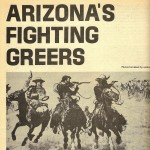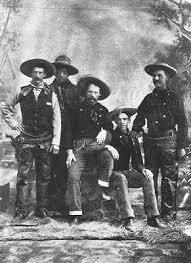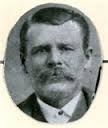Albert Stephen Farnsworth
1844-1904
Albert Stephen Farnsworth was born May 22, 1844 in Nauvoo, Illinois, a few short weeks before the martyrdom of Joseph and Hyrum Smith. He was the third son of Stephen Martindale Farnsworth and Julia Anne Clark and the seventh generation of Farnsworth’s in the United States.
His ancestors came from Farnsworth, England and if our genealogical recrods are accurate, were descended from English kings of the Plantagenet line. The Farnsworth’s were among the early settlers of Massachusetts. We find record of them as early as 1638 taking an active part in the settling of Massachusetts. Matthias Farnsworth, Albert’s immediate ancestor, settled in Groton, Massachusetts. He was a freeman and took active part in the civic and religious affairs of the community. Men of this family fought and died bravely for freedom in both the Revolutionary and Civil Wars. One of these received commendation from his commanding officer and was posthumously honored after he fell at Gettysburg. The family sought after freedom of religion and high education and it became traditional for males of this line to attend Harvard.
Stephen Martindale, Albert’s father, was born October 8, 1810, in Dorset, Vermont. He was the first of the family to join the Mormons. He joined in the early days of the Church, moved to Nauvoo, Illinois, and endured the trials and persecutions suffered there by the Saints. He was a carpenter and builder and helped to build the Nauvoo Temple. A short time before the martyrdom of the Prophet, he had the “Farnsworth Vision” in which he saw the exodus of Saints from Nauvoo under the leadership of Brigham Young, the blessings and abundance that would come to the Mormons in the West, and their triumphant return to Jackson County in the last days. He went west from Nauvoo and settled first in Iowa, and later emigrated to Utah and settled in Pleasant Grove He was called from there to help settle Richfield and Joseph City, Utah. He died September 19, 1855.
Albert’s mother, Julia Anne Clark, was the daughter of Richard and Anne Elizabeth Sheffer Clark and a descendant of William Clark who came to Pennsylvania with William Penn in 1682 and helped to establish the village of Chester and later the city of Philadelphia. These early Clarks belonged to the Society of Friends, commonly called the Quakers. According to family genealogical records, they were of Scotch-Irish lineage descended from the Stuart line of the kings of England. William Clark served as judge and a member of the first governing body of Pennsylvania. Members of the family served in both the Revolutionary and Civil Wars.
Richard and his family heard the gospel from Franklin D. Richards in 1842. They joined the Church and moved to Nauvoo and helped in the building of the Nauvoo Temple. In May of 1850, they crossed the plains and became the first permanent residents of a community which they called Pleasant Grove. Julia Anne went with her husband to settle southern Utah and Arizona and after his death, moved with her sons to Mexico where she lived, until she died on October 24, 1898 in Colonia Pacheco. She loved flowers and patiently carried seeds and potted plans as she moved from place to place. These she planted between the rows of vegetables, and her garden was thus a place of beauty. She took with her to Pacheco a yellow climbing rose she had carried with her on her many travels and it is said that yellow roses now grow wild all over the Pacheco Valley.
Albert Stephen Farnsworth crossed the plains with his parents and grew to manhood in Richfield, Utah. He was a great athlete, a foot racer, and wrestler. Brigham Pierce, boyhood acquaintance, often told about Albert Farnsworth. He said the first time he ever saw him, he was with his older brothers and they were challenging anyone who would to race or wrestle against Albert. He said that as far as he knew he was never beaten. Albert also loved to sing and dance. From his early youth he showed remarkable civic leadership. He built the recreation hall in Richfield and served as recreation manager. He had a way with young people and they loved and respected him. His religion, it would seem, was the dearest thing in his life. His loyalty in support of Church Authorities set an example to the youth of the community who loved and emulated him. He was a man of good judgement whose counsel was often sought.
While living in Richfield he married Martha Hall. She bore him four children before they were divorced. Later he married Mary Ann Johnson, Eliza Bertleson, and Sarah Ann Slade. All three of these wives went with him to Mexico and bore him large families.
In 1879 he was called to help settle St. Johns, Arizona. There the Farnsworth’s lived on a ranch quite a distance from town and their nearest neighbors were the Nathan Tenney’s who later also went to Mexico. During this time bands of Indians frequently came by the ranch and stopped for food. They were never turned away. Though the Farnsworth’s had very little for themselves, they always shared with the Indians. I remember Grandmother telling about an Indian brave who came to her one day and asked for food. She offered him what they had, cornbread and molasses, but he threw it down and demanded something better. Grandmother was so angered by seeing good food wasted when her own children often went hungry, that, forgetting her husband’s warnings to always treat the Indians with kindness, she picked up the broom and chased the man out of the house. He never returned. Grandmother’s eyes would flash with righteous indignation as she told the story to me. The picture of her with her broomstick in hand and the Indian fleeing before her has always stayed with me.
While still at the ranch, they also had an exciting experience with the famous outlaw, Billy the Kid. Brother Tenney had moved his family back into town and grandfather was away working at a logging camp. One day, becoming very worried about his family, he left work and rode the 75 miles to the ranch. He found the family safe, but decided to spend the night and return to work the next morning. Before sunrise a band of armed men rode into the ranch and demanded breakfast and feed for their horses. Grandpa recognized the leader as the notorious bandit, Billy the Kid. Grandmother hurriedly fixed a fine meal while Grandfather fed and watered the horses. After the meal, the leader asked what they owed and Grandfather named a small sum. The leaders refused to pay and as Grandfather moved to go into the house a dozen revolvers were drawn with heavy oaths and threats to blow out his brains if he moved. Quickly his terrified wife threw her arms around her husband’s neck, protecting his body with her own. The outlaws searched the Tenney home taking all their rifles. They took Albert’s new saddle, and, asking if he had guns in his house, moved toward it. Grandmother thinking only of their desperate situation dashed for the door and barricaded it with her arms, “Stand back!” She said. “Don’t you dare go in there.” With a cynical smile, but heeding her flashing brown eyes and her fearless attitude, the bandit turned away. With Grandfather still under guard, the outlaws rounded up a band of choice horses belonging to the people of St. Johns; but as soon as they started to ride away, he rushed into the house of his rifle determined to follow the outlaws and recover the horses. Grandmother pleaded with him not to go, fearing for his life and those of the children. But two other horses came in sight. Quickly Mary and Albert drove these into the corral.
“Mary, I will not see a single one of these horses taken,” Albert told her. “Take this gun and go into the cellar. Shoot the first man who tries to enter. I will stand guard here.”
A commanding figure he no doubt made as he walked back and forth, his Winchester shining in the sun. The outlaws paused to consider. This was no man to be trifled with, and the wife handled a gun as if she too knew how to use it. Apparently not wishing to take a chance, Billy the Kid gave orders for his men to go to the trail. Later help came and a posse was formed to pursue the bandit, but he escaped. For years afterword, Grandmother enjoyed a certain fame as the woman who stood off Billy the Kid.
In 1880 Stephen Albert was called from St. Johns to Fruitland, New Mexico. There he operated a store on the banks of the San Juan River, which divided the town of Fruitland. Because of his honesty and fairness in trading with the Indians, they became his friends and they helped him and protected him. Because of his influence with the Indians he was chosen as one of a party to accompany Heber J. Grant, who was then a young Apostle, on a tour of Arizona. The Indians gave Albert an Indian name, “Chis, Chily, Ixy,” which means that he was a pretty good man.
Albert was called to the colony of Mancos, Colorado, which was in need of strong leadership. He was made Presiding Elder and later sustained as Bishop. Arriving in Mancos he called the people together and asked them to all work together to build a church house. They agreed and although it was summer and they were busy with farm work, they began at once cutting and hauling logs. Actual building began on July 1, and by July 24, the building was far enough advanced to hold the traditional celebration there, and by the time winter set in it was completely finished.
Albert and the Saints prospered in Mancos. He built homes for his families, cleared land of farming, set a store, and bought a grist mill. But persecution by U.S. Marshals caught up with them again. Bishop Farnsworth had either to go underground or move again. He never hesitated. Believing in “the principle,” his wives and children were dear to him and they were his responsibility. He couldn’t leave them to fend for themselves, deny them the protection they needed or the right to his name. They decided to move to Mexico. This time there could be no open selling of property. Secretly he called his family together. Taking what little they had saved and food and clothing to last them for a while, they loaded wagons and began the long journey to a new land. This was in 1889.
They first settled in Colonia Pacheco where Albert hoped to be able to support his families by building. He and his two brothers built many of the homes in Colonia Pacheco and Colonia Garcia. But times were hard and money and food were scarce. Albert bought a sawmill and his brother Alonzo operated it while Albert and his older sons began to work at railroad building for John W. Young. When the railroad venture went broke, he not only lost his job, but the little money he had invested in it. He and his boys turned to freighting and whenever they came home, they brought their wagons loaded with provisions which they divided with the hungry people in the town. Albert had always been generous to a fault. He could not see a woman or a child suffer in want, so often he gave away necessities and left home to find more work in order to help those in need. No one wife or family was every favored above the other. Each family took turns accompanying him while he worked for the railroad. When he received his pay he bought things to make his families comfortable. Aunt Bertha Romney says that she remembered at one time he bought three stoves, three bedroom sets, three organs, and several bolts of cloth.
On the rough frontier while he worked for the railroads he tried to keep his family free of bad environment and he himself lived up to the principles of the Church. Each day there were family prayers, singing hymns and reading the Bible. He tried to teach what was right and impressed his children with the importance of being honest and truthful. His loyalty to the Church was tested when Moses Thatcher was dropped from the Council of the Twelve. His son Reuben said that of this occasion, “Pa loved that man above all men and he couldn’t believe that he was in the wrong. For many days and nights, Pa fasted and prayed about it, and then one day he picked up the Doctrine and Covenants and read a passage where the Lord promised that the President of the Church would never lead the Saints astray. Albert knew this was an answer to his prayer. From that time on, he had no doubt. That little passage of scripture is why we are members of the Church today.”
In 1895, Albert with his wife Mary Ann and her family, moved to Sabinal where Albert took a contract with the Northwestern Railroad. The older boys freighted from Sabinal to Villa Ahumada, always resting on Sunday. When this railroad job was finished Mary Ann moved to Colonia Juarez where she could put her children in school. Albert sold the sawmill in Pacheco to his brother and invested the proceeds in farmland at Colonia Dublan. But again in 1904 he took a railroad job in the Oriente Sur Railroad and moved Mary Ann and her family to Guerrero, Chihuahua. During the years they had moved, Mary had lost five of her fourteen children. Here at Guerrero she lost her sixth. To relieve Mary Ann’s grieving, Albert sent her back to Dublan, where he had built her a lovely home. The younger children also needed to attend school. His wife Lide (Eliza) went out to stay with him and the boys. In November Albert became desperately ill. Mary Ann hurried to his side. Although he was unconscious when she arrived, he roused himself, spoke to her, and calling the boys to him, he exacted a promise from them that they would continue with the work, pay any debts that he might owe, care for his wives and children, see that their sisters were taken care of, and that the younger children were given an education. A promise the boys dutifully fulfilled.
He died on November 28, 1904 and was buried in Guerrero, Chihuahua, beside his daughter.
He was recognized as one of the great pioneers of the Mormon Colonies in Mexico. Of him it was said, “To know Albert Stephen Farnsworth was to love him.” He was clean and virtuous in thought and action, honest in all his dealings with his fellowmen, kind, charitable, and generous to a fault, particularly to those in need. Some men preach their virtues, only a few like Albert have no need for that. Their lives and their deeds speak for them. It can be truly said of him that he left every community in which he lived a better place than he found it.”
Albert Stephen Farnsworth: pioneer, builder, colonizer, leader of men, husband, and father from Nauvoo, Illinois, to Guerrero, Chihuahua. Thousands of rugged miles, years of hardships, suffering and privation to give a numerous posterity the heritage that is theirs. A grateful generation blesses him. My second son bears the name, in humble gratitude to the grandfather I never knew.
Floriene Farnsworth Taylor, granddaughter
Stalwart’s South of the Border, by Nelle Spilsbury Hatch page 159
 The Greer brothers – Nat, Dick, and Harris – were a rough bunch of Texas cowboys. Their father, Thomas Lacy Greer, converted to Mormonism after returning from the Mexican War. Thomas, his wife, and their eight children moved their cattle operation to the Arizona Territory.
The Greer brothers – Nat, Dick, and Harris – were a rough bunch of Texas cowboys. Their father, Thomas Lacy Greer, converted to Mormonism after returning from the Mexican War. Thomas, his wife, and their eight children moved their cattle operation to the Arizona Territory.

